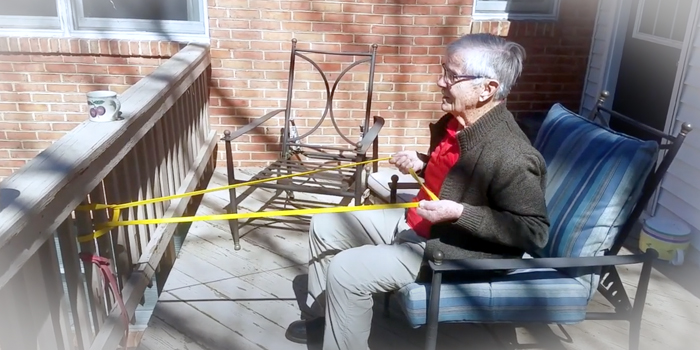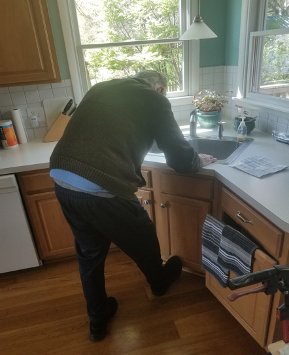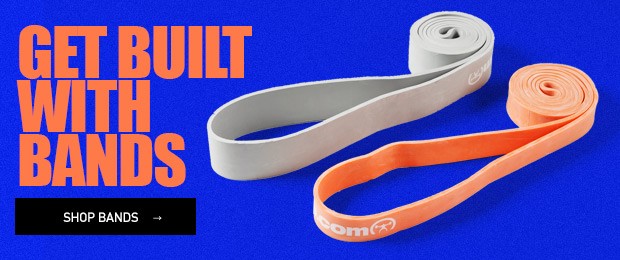
When I was first given the opportunity, almost two years ago, to start training Ed, I admit I was a little hesitant at first. Being a younger coach in the game, though, I will never turn down a work opportunity. An opportunity to work on my craft and make a difference in an individual’s life, not to mention that this field isn’t easy, and this is how I make a living. On a typical day, I may work with everyone from collegiate athletes, the general population, high school athletes, and even ten-year-olds, but Ed is 90 years old!
RECENT: More Advantages of Weight Training for Senior Strength
Ninety years is a lot of wear and tear on the body! I was uncertain about what we would achieve and if it would be even worth our time.
The Assessment
This situation is different for me because Ed is the father of a client of mine—someone who is comfortable with how I conduct a training session and comfortable with me as a person. Before meeting Ed, I was given a list of physical activities that he was already capable of doing and the physical activities that he struggled with. The first meeting, or evaluation, was unlike what you typically would do with an athlete or any client. Our goals aren’t to build up any capacities or take him from point A to point B, but rather to maintain the capacities he already has and give him the greatest potential to live with the highest quality of life possible. These goals will be the basis of all of our training. If he happens to improve on certain qualities, which he has, that is just the cherry on top.
Exercise Selection
From a training perspective, the exercise selection process and training guidelines are where I was forced to think the most outside of the box. What do you do when your regressed movements need regressions? The number one thing I focus on is what Ed can do, as opposed to what he cannot do.
If an exercise isn’t an option, we don’t harp on that. If it is achievable but makes either one of us uncomfortable, it is eliminated from the selection, with no exceptions. This is also where I saw carry over from my typical clients and athletes programming. When laying out Ed's exercise selection, he still has a main movement in the primary patterns:
- Squat
- Hinge
- Push
- Pull
- Throw
Along with additional work on his grip strength, upper back strength, anti-trunk movement patterns, and mobility.
Yes, Ed performs at least one movement from each category once per week. His movement selection is listed below.
- Squat: Supported Squat
- Hinge: Supported Hinge/RDL (double leg or single leg)
- Push: Pushup on counter
- Pull: Seated Band Row
- Throw: Seated Basketball Chest Pass
We don’t need an unlimited supply of movements for each category; we need one. One movement variation is added if appropriate, either through how the movement is performed (double leg or single leg, etc.), adjusting the movement's tempo), or adjusting the total volume. Focusing on a single movement of each category allows us to continuously practice that movement and gain the confidence and coordination necessary for progression. It also makes it easier for both of us to have just one because at 90 years old, trying to remember five different squat variations is not high on the cognitive checklist.

Along with the main movements, we can perform additional accessory movements, including;
- Dumbbell curls and various dumbbell shoulder raises
- Band tears and band face pull variations
- Band leg curls, TKEs, and calf raises
- Band pallof iso holds and presses
- Hip work in all four patterns, flexion, extension, abduction, and adduction
- An entire list of stretching and mobility movements for the entire body
Our top priority is to be efficient as possible at those main movements. Everyone needs some variety in their training. It is necessary to keep the training physically and mentally stimulating and bring up weak points, such as the upper back, grip, and ankle mobility.
Indicator Exercises
Every successful program needs indicator exercises. These are the exercises that are selected to monitor the progress and success of the program. For example, a powerlifter must perform the squat, bench, and deadlift with as much weight as possible, so those three movements could be the indicator exercises. For more advanced lifters, the safety squat bar squat, floor press, and deficit deadlift are three exercises with carryover to the big three, so they are considered indicator exercises. Regardless of the situation, progress must be monitored somehow.
When selecting Ed’s indicator exercises, we had to work with his current capabilities. We aren’t looking to hit PRs each week in the exercises, and failure is NOT an option with any movements we perform. I came to terms with few exercises relatable to our initial goals, measurable, relatively safe, and extremely functional with his quality of life in mind.

Testing his grip strength over morning coffee and doughnuts
These movements were the following:
- Grip Strength: Tested through a grip dynameter
Grip strength has been shown extremely beneficial to the geriatric group and has been one of the main predictors of increased life span.
- Floor to Stand (when this was appropriate): Timed
The ability for him to achieve this task could mean life or death. The time is not as important for me, but rather the efficiency in performing the task. He would start by lying flat on his back and then work his way up to his feet. Any support was encouraged.
- Feeling: A basic questionnaire
The feeling, or questionnaire, is by far the most beneficial indicator of the training. As most coaches know, the ability to read your athletes and redirect a workout based on your findings is an art form in of itself. It lets me know what will be possible to achieve for that day of training and how the overall training is going.
Ed has actually improved his grip strength and shortened his time from lying on the floor to standing up from his initial tests. It would have been fine if he didn’t improve, but numbers drive individuals no matter the age, and Ed was no different. He wants to improve and is proud when he does.
The Overlap
A very eye-opening experience that I learned through training Ed early is that there is so much overlap through various clients. People are people. There are discrepancies in how I communicate with each individual, how I handle certain situations, and how I program for them, but the training is scary similar at the end of the day.
We have an objective we want to improve upon, we set a group of exercises to achieve that objective, and we continuously regulate as the training unfolds. The Xs and Os evolve and differ from person to person, but training is training at the end of the day.
Some may have been deeply interested in my long-term periodization plan and weekly undulating microcycles, but they're nonexistent in this plan. Instead, we have our program at the core, and his ability to move and challenge himself through that movement is what takes us through training that day. Movement and strength are a skill, and we practice them every day.
Final Thoughts
Training to improve an athlete's 40-yard dash, vertical jump, and ability to excel on the field to the total opposite side of the spectrum, training Ed has exposed me to problem-solving and experiences that I would never have had the chance to solve before. Strength is very different for individuals and is more than just pounds on the bar. I appreciate the low hanging fruit through all training. While this experience has taught me an unbelievable amount about training, the biggest thing I’ve taken away from this is more on a personal level, and that is my new friendship with Ed. As Hallmark as it sounds, the wisdom, stories, and laughs shared go much deeper than the training. The training has served more of a language for two people who would otherwise never meet to share a common bond.











6 Comments